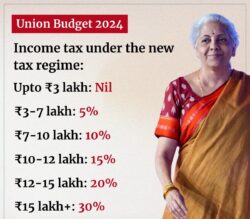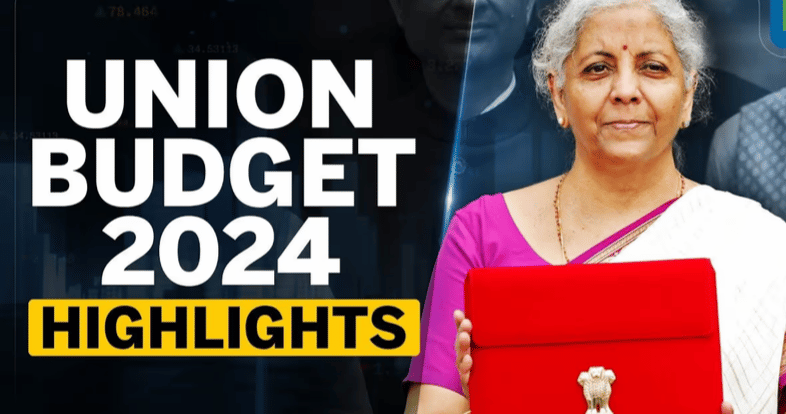Union Finance Minister Nirmala Sitharaman on July 23 presented her seventh consecutive budget. This budget marks the first by the BJP-led NDA government since its re-election in June.
Table of Contents
ToggleBudget Focus Areas:
Ms. Sitharaman emphasized that the Budget will target employment, skilling, MSMEs, and the middle class. An allocation of ₹1.48 lakh crore was made for education, employment, and skill development.
Nine Priorities of the Budget:
- Productivity and Resilience in Agriculture
- Employment and Skilling
- Inclusive Human Resource Development and Social Justice
- Manufacturing and Services
- Support for Promotion of MSMEs
- Urban Development
- Energy Security
- Infrastructure
- Innovation, Research, and Development
Agriculture Budget:
Ms. Sitharaman announced several measures for farming, including the initiation of natural farming for farmers, achieving self-sufficiency in pulses and oilseeds, and the development of digital public infrastructure.
Employment and Education Budget:
Three new employee-linked incentive schemes were introduced, aligning with the Employee Provident Fund Organisation. These schemes focus on recognizing first-time employees and supporting both employers and employees.
Students who have not benefited from any government schemes will receive support loans of up to ₹10 lakh for education in domestic institutions. E-vouchers will be provided directly to 1 lakh students annually for interest subvention of 3% on loan amounts.
A comprehensive scheme was also announced for providing internships in 500 top companies to 1 crore youth over five years, offering 12 months of exposure to real-life business environments.
Bihar and Andhra Pradesh Budget:

As part of the larger “Purvodaya” plan for the development of eastern states, several schemes were announced for Bihar, Jharkhand, West Bengal, Odisha, and Andhra Pradesh.
Bihar will see the construction of expressways costing ₹26,000 crore, along with new power projects, airports, medical colleges, and sports infrastructure.
For Andhra Pradesh, support will be provided for industrial development under the AP Re-organisation Act, including funds for basic infrastructure like water, power, and roads.
Budget for Women:
An allocation of over ₹3 lakh crore was made for schemes benefiting women and girls, promoting women-led development.
MSMEs Budget:
Special attention was given to MSMEs and labor-intensive manufacturing. A new assessment model for MSME credit by public sector banks will rely on the digital footprint of MSMEs rather than assets and turnover criteria.
Personal Income Tax:

The finance minister revised the tax slabs under the new regime, enabling salaried employees to save up to ₹17,500 in income taxes.
While the rate of taxation remains unchanged, the size of the slabs has been adjusted:
- The slab of ₹3 lakh to ₹6 lakh is now expanded to ₹3 lakh to ₹7 lakh (tax rate 5%).
- Other slabs have been revised as follows:
- ₹6 to 9 lakhs: now ₹7-10 lakhs
- ₹9 to 12 lakhs: now ₹10-12 lakhs
- ₹12-15 lakhs: unchanged
- ₹6 to 9 lakhs: now ₹7-10 lakhs
Conclusion:
The Union Budget 2024 aims to drive comprehensive development across various sectors, with a clear focus on employment, education, MSMEs, and women-led initiatives. The revised tax slabs and targeted allocations reflect a strategic approach to fostering growth and inclusivity in the economy.










